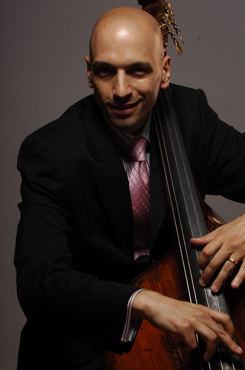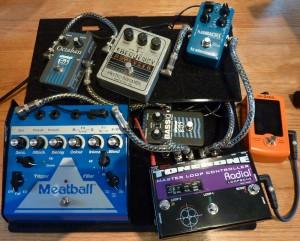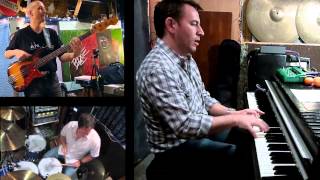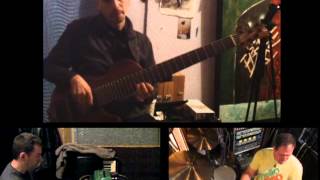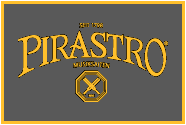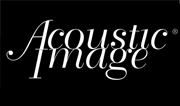Pedal Power!
Pedal boards and the electric bass
It’s something I’ve always thought would be cool, but in the every day sideman world, effects pedals have little or no application for the bass. I have vivid memories of being 13 years old and running my Fender Precision through my dad’s Cry Baby wha wha pedal and having fun– by myself in the spare bedroom. Try pulling that out on a gig. You had better have a vision of how it fits into the music! Well, I’m older now, and I’ve realized that if you want to get crazy with the pedals, all you have to do is form a band and write music with the pedals in mind. Easy!
My first real excursion into effects pedals was during my tenure with jazz legend Maynard Ferguson. There was a time when Main (our nickname for Maynard. Either that or Boss) had a series on Concord Records called Maynard Ferguson Presents….. One of the first artists he presented was our master trombonist Tom Garling. For a few tours when Tom’s CD was new, Maynard let us open up his shows with a few tunes. Tom always had me take an electric bass solo on (I believe it was called) Shrimp Tales. I remember that during a week when we were playing at Jazz Alley in Seattle, I swung by Bass Northwest one afternoon just to waste some time. I started fooling around with their pedal display, and really dug the EBS Octaver. On a complete whim, I bought it that day and tried it out that night on the gig. I kicked it on for my solo that night. Pretty slick!
That’s about as adventurous as I got for many years. I can count the number of times on one had that someone has actually called me for a gig and asked if I could bring an effects pedal– ZERO! That didn’t stop me from fooling around with them at the house, though. It wasn’t until I co-founded an electric trio that I realized that I could write tunes around specific sounds, thus making my pedal fetish a valid –nay– a necessary investment! Here’s what I’m playing with now.
Your Guitar Cables Are Important!
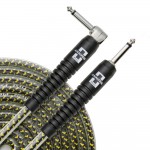 The first and foremost important element of any pedal board is the signal chain, specifically the type of cable you use. You need to have quality guitar and patch cables if you’d like your precious instrument to sound like you remember it sounding. Bad cables will suck the life out of your tone.
The first and foremost important element of any pedal board is the signal chain, specifically the type of cable you use. You need to have quality guitar and patch cables if you’d like your precious instrument to sound like you remember it sounding. Bad cables will suck the life out of your tone.
I’ve been endorsing cable made by an American company called Analysis-Plus for a few years now, and I love them. I can’t say enough about the quality and sound of these cables. When it came time to wire my board, that was my first call. As you can see from my photos, though, I still haven’t settled on a placement scheme, so the wires are kind of running amok around the board. Anyway, I’m using their “Yellow Oval” series, which is near the top of their food chain, but still very affordable, considering I’ll have these cables for at least 100 years. Even their entry level cables are great, since they’re all made with their patented “hollow oval” design. You can check out the science of that on their website.
The next element of signal chain preservation is a must have pedal for a bass pedal board- the ToneBone Loopbone. Don’t let the name fool you. It’s not a looper. It serves a simple, yet necessary purpose in the pedal board, and it’s the first thing that your bass gets plugged into.
 Here’s the problem with pedals. As you add more pedals, you add more wire and electronics between your bass and your amp. With the bass, you lose a whole lot of high end and tone. There are better sources for information on this topic, but my understanding is that your bass amp puts an electrical load on your bass pickups. Placing too many pedals and cable between your amp and your bass affects the load on your bass in a negative way.
Here’s the problem with pedals. As you add more pedals, you add more wire and electronics between your bass and your amp. With the bass, you lose a whole lot of high end and tone. There are better sources for information on this topic, but my understanding is that your bass amp puts an electrical load on your bass pickups. Placing too many pedals and cable between your amp and your bass affects the load on your bass in a negative way.
Plug your bass into the Tonebone on the right, then run a guitar cable from the left of the Tonebone to your amp. There are two effects send and returns, labeled Loop 1 and Loop 2. The Tonebone has a knob that simulates the load your amp places on your pickup, thus keeping your bass pickups very happy. I experimented with this, and the results were pretty drastic. My bass sounded completely dead without the Tonebone. With the Tonebone at the head of the signal chain, I couldn’t tell the difference between running my bass into the pedal board or running it directly into my amp. All of the high end, definition, and dynamic range came back to my sound.
The Tonebone has two effects loops that can be triggered though switches to further help limit how much instrument cabling your signal has to pass through. That makes it easy to trigger two effects at once if they’re on the same loop (got to remember to turn the pedals on ahead of time!). It also has dedicated tuner output that’s not in the signal chain.
Create a band to satisfy your urges!
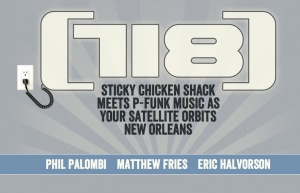
I guess now would be a good time to mention the project that allows me to indulge in my pedal fantasy, a band that we call (718). We’re just about done with our first album, but lucky for you, we’ve video taped each recording session. I’ll post a link to the YouTube videos that show off various pedals in my setup.
So, I guess I’ll start with loop one, which has my two envelop filters plugged into it. Why in the world do I need TWO envelope filters, you ask? Well, I have a very good reason. They both have specific areas of expertise.
I was hanging at a club in NYC called Smoke years ago checking out a great horn band called Hot Pants. One night, the bassist kicked on an envelope filter that caught my ear. Holy cow! That pedal sounded great! Of course, the bassist was great, but there was something magical about that pedal. It was the Lovetone envelope filter, made by a UK company called Meatball. The next day I was online checking them out, but they were $350. I hemmed and hawed about buying one, since I didn’t really have a good reason to own one at the time, and by the time I decided to buy one, the company had discontinued it. D’oh!
Well, I had my heart set on that sound, so I headed to Rudy’s on 48th street in NYC to check out their envelop filter selection. I fell in love with the EBS Bass IQ. What’s great about the EBS pedal is that it has the standard up and down filters, but it also has their custom made setting called IQ. I don’t know the specifics of what makes that setting different than the standard up and down options, but it’s really cool. I bought it that day. It’s a tricky pedal to use live, though, because it’s very sensitive to input. You can have it set perfectly at sound check, but it might sound a little different on the gig, which makes it tricky to just pop out on a random gig. I think I’ve found it’s strength, though– bass solos! It is the most expressive envelop filter I’ve ever played though.
Of course, I’ve always dreamt of the Lovetone. A year later I heard that they were making the pedal again, but now they were $400! I hemmed and hawed, then months later decided to grab one. Of course, they stopped making them again. D’oh! Well, to make a long story short, I found one on the used market years later…. for even more money.
Yes, I paid north of four bills for an envelope filter, but it’s not a normal filter. I swear this thing is alien technology. The sounds you can get out of it are crazy! It’s the best filter I’ve used for straight up groove-pocket playing, hands down. It can also dig into Dub and Techno sub-bass stuff. I’m only beginning to touch the surface with what this thing can do.
You may have noticed in the photos that my EBS Bass IQ is kind of buried in the board. That’s the other nice thing about the Tonebone. I’m triggering the effects from the Tonebone rather than kicking the pedals, so I can pretty much ignore pedal placement. I only need to hit one of the two buttons on the Tonebone.
Onto loop two of the pedal board. The first thing in the chain is the TC Electronic Flashback. I discovered this pedal though a great guitarist Mark McCarron. I am one fourth of his band The McCarron Bros. We were at a sound check in upstate NY when I heard him stomp on that box. Wow! I think I bought that pedal via my iPhone before the sound check had ended. It has various delays and slap back effects, as well as a looper. The most amazing thing about it is the quality of sound. When I record a loop, I’m still amazed at how real the loop sounds. You can’t hear any degradation of signal at all. That says a lot, since some pedals have problems with the bass register.
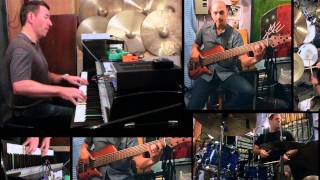
"Something" by George Harrison. In a live performance, I kick the Flashback on at the very end to loop my line. Of course in the studio, I just overdub...
The “P.Pong” setting is really slick. It is a delay that almost behaves like a looper, since you can get it to repeat what you play and set how long you want it to repeat the information. You can set up a groove, then morph it into new directions. I really like the Loop function as well. I arranged a version of George Harrison’s Something, where at the very end I play an eight bar descending bass line, which I record with the Flashback, then kick it back in as a loop and start to solo over it with the band. I plan on writing more music with that idea in mind.
To the left of that is my EBS Octaver octave pedal. I was using the Boss OC-2 pedal in this position, but it just don’t track as well as I needed it to. The pedal would have too much trouble catching the pitch of the note I was playing, and forget about trying to sustain the note. It would just cut out. The EBS pedal does a much better job of tracking what I’m playing. When we initially formed (718), I was using my Nordstrand 6 string bass a lot. In a perfect world, I would bring two basses to every gig. However, I have been really digging just playing an old Fender Precision these days. The EBS pedal comes in handy on a few tunes that I recorded on the 6 string.
Finally, we arrive at the most un-useful pedal a person could have on their bass pedal board. It’s the Electro Harmonix Frequency Analyzer. I can think of no situation a bassist would ever need to use this pedal, that is, until I head my friend Tim Lefebvre use it on a gig at the 55 Bar one night. I loved the way Tim was using it. He’d just kick it on for a few notes here and there. Man, it was powerful! What a crazy sound. When used in the right place, it makes stuff happen. Of course, you need to learn when to use it. I had to buy one to see what I can do with it, and hopefully take it in a different direction than Tim. There’s only room for one Lefebvre, and I can’t compete! For now, though, I’m kind of following in his footsteps a little.
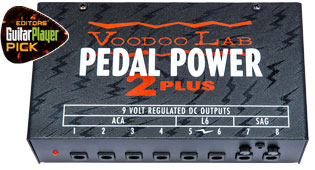 Finally, you may be wondering how many batteries I have to throw into a landfill each month. Not to worry! I’m hitting the local nuclear power plant for my needs with my Voodoo Labs Pedal Power Plus 2. This cool device comes with a bunch of outputs for pedals and all the different types of connectors you’ll need. It also has a regular AC socket that you can use for pedals with irregular voltage requirements. I run a split AC power cord out of that to power the Tonebone and the Electro Harmonix. It’s hidden from sight under the top tier of my pedal board.
Finally, you may be wondering how many batteries I have to throw into a landfill each month. Not to worry! I’m hitting the local nuclear power plant for my needs with my Voodoo Labs Pedal Power Plus 2. This cool device comes with a bunch of outputs for pedals and all the different types of connectors you’ll need. It also has a regular AC socket that you can use for pedals with irregular voltage requirements. I run a split AC power cord out of that to power the Tonebone and the Electro Harmonix. It’s hidden from sight under the top tier of my pedal board.
Pedals are a whole heck of a lot of fun. I’m planning on digging even deeper, though that means I’m going to have to keep writing music to accommodate my fetish. Stay tuned, and take cover!









